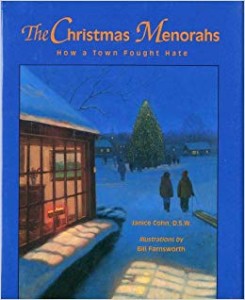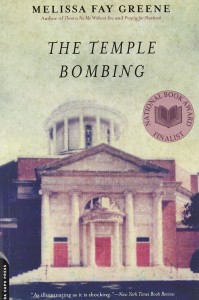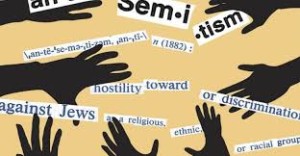 The other night I watched a lecture streamed from the Jewish Theological Seminary. The speakers were Dr. Mary C. Boys, Vice-President of Academic Affairs and Dean, and Skinner and McAlpin Professor of Practical Theology, Union Theological Seminary and Dr. Shuly Rubin Schwartz, Provost, and Irving Lehrman Research Associate Professor of American Jewish History, The Jewish Theological Seminary. These two heavy hitters, scholars, teachers and friends, shared the stage in a conversation on “Anti-Semitism in America: How did we get here and how can we move forward?”
The other night I watched a lecture streamed from the Jewish Theological Seminary. The speakers were Dr. Mary C. Boys, Vice-President of Academic Affairs and Dean, and Skinner and McAlpin Professor of Practical Theology, Union Theological Seminary and Dr. Shuly Rubin Schwartz, Provost, and Irving Lehrman Research Associate Professor of American Jewish History, The Jewish Theological Seminary. These two heavy hitters, scholars, teachers and friends, shared the stage in a conversation on “Anti-Semitism in America: How did we get here and how can we move forward?”
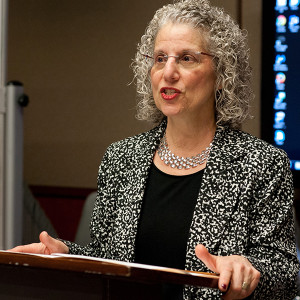 Planned in response to the synagogue shooting in Pittsburgh just weeks ago and close to the 60th anniversary of the bombing of The Temple in Atlanta, Georgia, the lecture-discussion focused on the historical roots of anti-Semitism from the time of Jesus to the present.
Planned in response to the synagogue shooting in Pittsburgh just weeks ago and close to the 60th anniversary of the bombing of The Temple in Atlanta, Georgia, the lecture-discussion focused on the historical roots of anti-Semitism from the time of Jesus to the present.
Both lecturers made the point that often adherents of either religious tradition- Judaism or Christianity- are unaware of the history behind antisemitism, the close relationships between the two religious streams and how antisemitism has changed over the years.
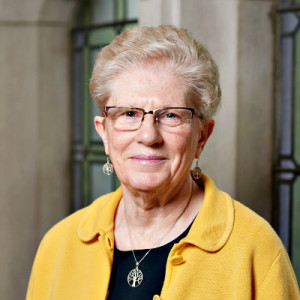 Dr. Boys emphasized that liturgical reform is needed. While today some of the more anti-Jewish passages of Christian liturgy have what are in effect trigger warnings, the texts are still there. She seemed to advocate a real change in the way texts are presented.
Dr. Boys emphasized that liturgical reform is needed. While today some of the more anti-Jewish passages of Christian liturgy have what are in effect trigger warnings, the texts are still there. She seemed to advocate a real change in the way texts are presented.
I was struck by both speakers’ emphasis on the power of words. We read in Torah that the world was created with words: God said, “Let there be light” and there was light. The rest of creation follows a similar pattern of words and then creation.
We recognize the power of words-especially idle words- to hurt when we confess on Yom Kippur. And we recognize the power of words to unite, when two people-in front of witnesses- the groom presents a ring to his bride with words.
We need to be “in close conversation with each other” to solve the problem of antisemitism which, according to Rabbi Lord Jonathan Sacks is “like a canary in a coal mine.” (a simile that others have also used) Antisemitism is a danger signal for society at large and allows hatred in all forms to rear its head.
Below are books – both fiction and nonfiction – related to the topic of anti-Semitism through the centuries:
Cohn, The Christmas Menorahs: how a town fought hate
Dauvillier, Hidden
Finkelstein, Captain of Innocence: France and the Dreyfus affair
Sommer, Hammerin’ Hank Greenberg: baseball pioneer
Cameron, The Fruit of her Hands: the story of Shira of Ashkenaz (Fiction)
Carrol, Constantine’s Sword: the church and the Jews
Dauber, Jewish Comedy: a serious history
Fletcher, The List (Fiction)
Goldstein, A Convenient Hatred: the history of antisemitism
Greene, The Temple Bombing
Kertzer, The Popes Against the Jews: the Vatican’s role in the rise of modern anti-Semitism
Laqueur, The Changing Face of Antisemitism: from ancient times to present day.
Poliakov, The History of Anti-Semitism: from the time of Christ to the court Jews
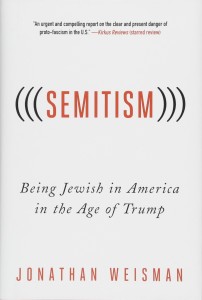 Salkin, The Gods are Broken: the hidden legacy of Abraham
Salkin, The Gods are Broken: the hidden legacy of Abraham
Shapiro, Oberammergau: the troubling story of the world’s most famous passion play
Trachtenberg, The Devil and the Jews: the medieval conception of the Jews and its relation to modern anti-Semitism
Weismann, (((Semitism))): being Jewish in America in the age of Trump
- Is It Passover Yet? - Thu, Apr 18, 2024
- MESH Report April 9, 2024 - Thu, Apr 11, 2024
- Guess Who? - Wed, Mar 13, 2024

